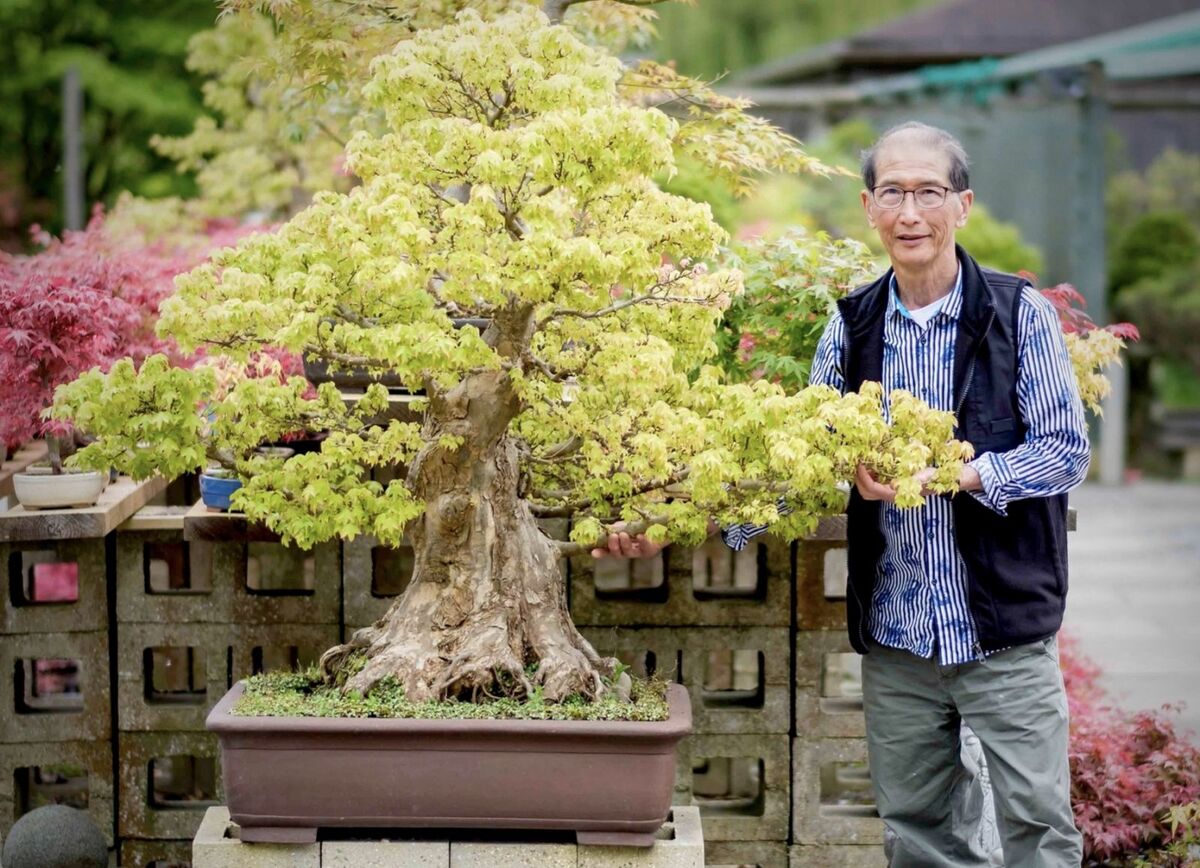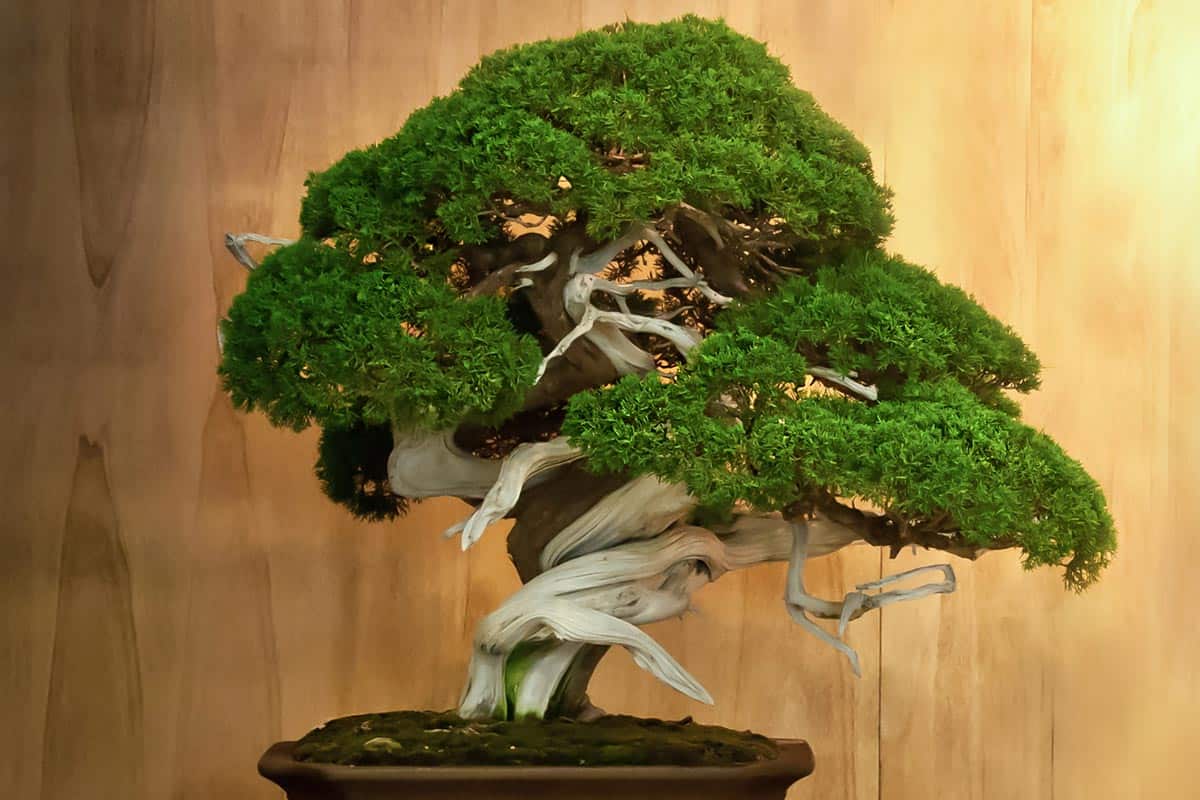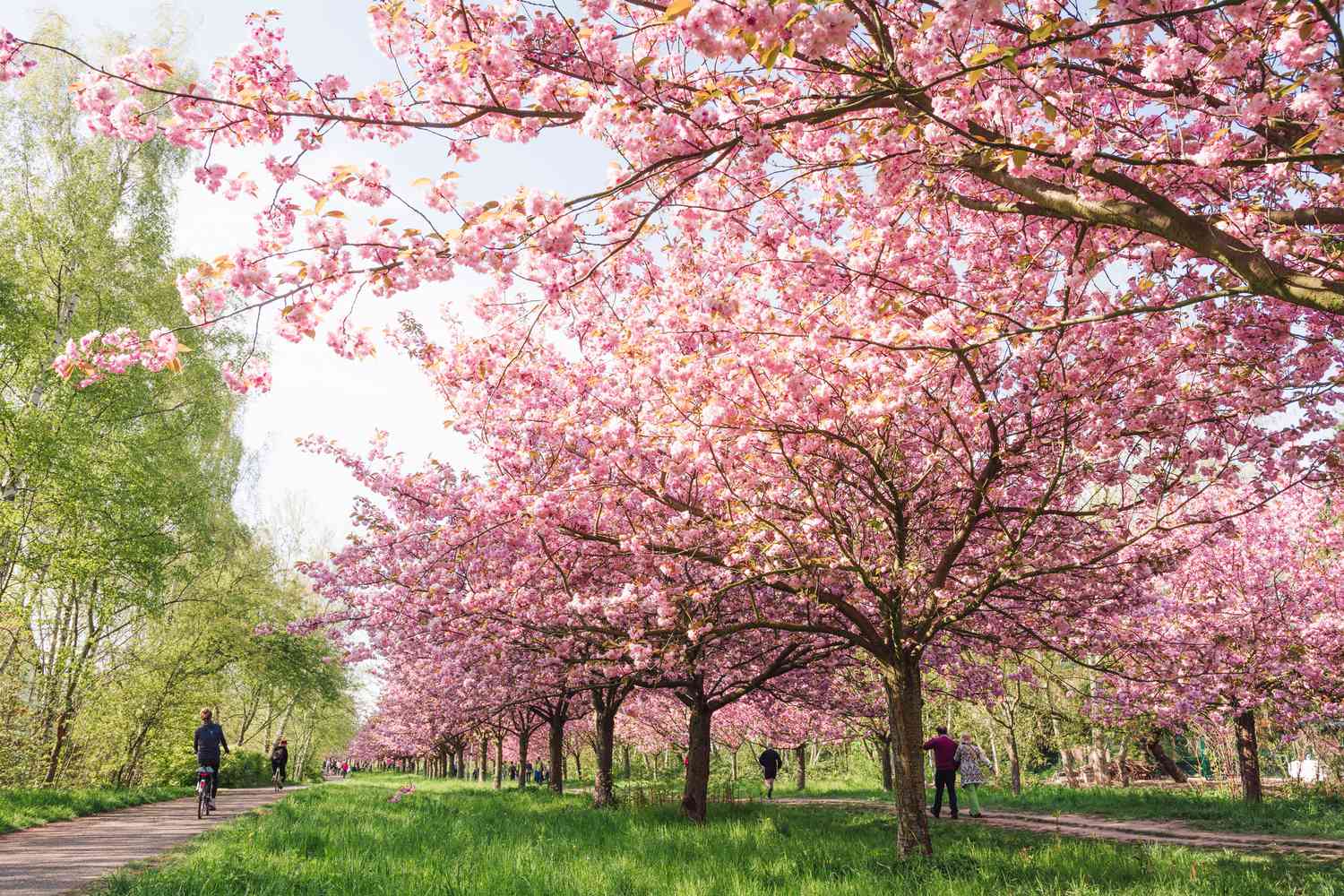Home>Types of Gardening>Ornamental Gardening>When Do Bonsai Trees Blossom


Ornamental Gardening
When Do Bonsai Trees Blossom
Modified: January 22, 2024
Discover the enchanting world of ornamental gardening with bonsai trees. Learn when these miniature wonders blossom and create a stunning display in your garden.
(Many of the links in this article redirect to a specific reviewed product. Your purchase of these products through affiliate links helps to generate commission for Chicagolandgardening.com, at no extra cost. Learn more)
Table of Contents
Introduction
Welcome to the enchanting world of bonsai trees, where art and nature intertwine to create miniature works of living sculpture. Bonsai, derived from the Japanese words “bon” meaning tray and “sai” meaning plant, is a centuries-old horticultural tradition that has captured the awe and admiration of gardening enthusiasts worldwide.
Bonsai trees, with their delicate branches and exquisite proportions, are celebrated for their beauty, symbolism, and the sense of peace they inspire. Cultivating and caring for a bonsai tree is not only an enjoyable pastime but also a deeply satisfying art form that requires patience, knowledge, and an understanding of nature’s rhythms.
In this article, we will delve into the fascinating world of bonsai tree blossoms. We will explore the factors that influence the blooming of these miniature trees and discover the different types of bonsai trees that blossom in various seasons. Whether you are a seasoned bonsai enthusiast or new to the art, this article will provide valuable insights into when bonsai trees burst into color.
So let’s embark on a journey through the seasons and explore the magical world of bonsai tree blossoms!
Understanding Bonsai Trees
Bonsai trees are not your typical garden plants. They are meticulously cultivated and pruned to mimic the shape and scale of full-sized trees in nature. The art of bonsai involves recreating the beauty and harmony of nature in a miniature form, capturing the essence of an ancient tree in a compact space.
These miniature trees require specialized care and attention to thrive. They are typically grown in shallow pots or trays and have their roots pruned and branches carefully shaped to create the desired aesthetic. Bonsai trees are not a specific species; instead, they can be any type of tree or shrub that can be trained and miniaturized through careful cultivation techniques.
The key principles of bonsai involve creating harmony between the tree’s shape, size, and container, while also considering the natural elements such as trunk thickness, branch placement, and leaf type. Aesthetics are crucial in bonsai, with emphasis placed on creating a sense of balance, movement, and a feeling of age and maturity.
Understanding the different styles of bonsai is also essential to appreciating the art form. Some common styles include Formal Upright, Informal Upright, Slanting, Cascade, and Broom. These styles showcase different characteristics and evoke various emotions, giving each bonsai tree a unique story to tell.
Bonsai trees are often regarded as a symbol of patience, tranquility, and the beauty of nature. Their miniature size and intricate details provide a sense of calm and serenity, making them a popular choice for bonsai enthusiasts and collectors.
Now that we have a basic understanding of what bonsai trees are and the principles they embody, let’s explore the factors that influence when these miniature trees burst into a stunning display of blossoms.
Factors Affecting Blossom Time
The blossoming of a bonsai tree is a highly anticipated and cherished event for any enthusiast. However, the timing of when a bonsai tree will bloom is influenced by several key factors. Let’s take a closer look at these factors:
- Species: Different species of bonsai trees have their unique blooming patterns. Some species, such as cherry blossom bonsai trees, tend to bloom in the spring, while others, like the jade tree bonsai, may bloom in late summer or early fall. It is crucial to research the specific species of bonsai tree in your collection to understand its blooming season.
- Climate: The climate in which a bonsai tree is grown plays a significant role in its blooming time. Trees that are native to temperate regions may require a period of winter dormancy to initiate spring blossoms. In contrast, trees native to tropical regions may bloom throughout the year, influenced by consistent warm temperatures.
- Light: Adequate sunlight is essential for bonsai trees to blossom. The amount and intensity of light a tree receives can impact its blooming time. Some varieties of bonsai trees require a certain number of hours of sunlight exposure each day to trigger flower development.
- Watering and Fertilization: Proper watering and fertilization techniques play a crucial role in promoting healthy growth and blooming in bonsai trees. Overwatering or underwatering can disrupt the tree’s natural cycle and delay or prevent flowering. Likewise, the right balance of nutrients, provided through appropriate fertilization, can stimulate blooming.
- Pruning and Maintenance: Pruning, shaping, and proper maintenance of the bonsai tree can affect its blooming time. Regular pruning helps maintain the tree’s desired shape and encourages the growth of new buds, which may lead to more abundant and vibrant blossoms. Additionally, removing dead or diseased branches ensures the tree’s overall health and optimizes its chances of blooming.
It is essential to consider these factors and provide the appropriate care and attention to your bonsai tree to maximize its potential for a beautiful and timely display of blossoms. Understanding the needs of your specific bonsai species, observing its growth patterns, and implementing proper bonsai care techniques will greatly contribute to a successful blooming season.
Spring Blossoming Bonsai Trees
Spring is a time of renewal and blooming, and it is no different for many bonsai trees. This season brings forth a stunning display of colors and fragrances as various bonsai species awaken from their winter dormancy and burst into vibrant blossoms. Here are some examples of bonsai trees that typically bloom in the spring:
- Cherry Blossom Bonsai: The cherry blossom bonsai, or sakura bonsai, is perhaps one of the most iconic spring-blooming bonsai trees. These delicate trees produce stunning pink or white blossoms, creating a breathtaking spectacle that symbolizes beauty, transience, and the arrival of spring.
- Wisteria Bonsai: Wisteria bonsai trees are known for their cascading clusters of fragrant, lavender or white flowers. These beautiful blooming trees create an alluring canopy of color and add a touch of elegance to any bonsai collection. They require proper pruning and training to showcase their dramatic hanging blossoms.
- Crabapple Bonsai: Crabapple bonsai trees delight with their abundance of delicate and colorful blossoms. These trees produce miniature apples, adding an additional dimension of charm to their already picturesque blooms. Crabapple bonsai trees can showcase hues of pink, white, or red, making them a stunning highlight in any garden.
- Japanese Maple Bonsai: While the Japanese maple bonsai is prized for its stunning fall foliage, it also presents a breathtaking display of delicate flowers in the spring. The maple bonsai produces clusters of small, vibrantly colored blooms, ranging from shades of red and pink to yellow and green, adding a touch of elegance and beauty to the bonsai collection.
- Pomegranate Bonsai: The pomegranate bonsai tree displays its vibrant and eye-catching flowers in the spring. The bright, orange-red blossoms of the pomegranate bonsai are a sight to behold, and they may even give way to small, edible fruits later in the season. This bonsai tree is known for its resilience and ability to adapt to various climates.
These are just a few examples of the bonsai trees that come alive with colorful blooms during the spring season. Each of these trees showcases its unique charm and beauty, rejuvenating the surroundings and captivating anyone fortunate enough to witness their blossoming spectacle.
As a bonsai enthusiast, caring for your spring-blooming bonsai trees involves providing them with the proper growing conditions, ensuring adequate sunlight, water, and fertilization. Regular pruning and maintenance will help shape the tree and promote healthy blooming. With proper care and attention, your spring-blooming bonsai trees will reward you with a magnificent display of nature’s beauty.
Summer Blossoming Bonsai Trees
Summer brings warmth, vibrant colors, and an abundance of blooming trees to the bonsai world. The long, sunny days of this season provide the perfect conditions for many bonsai trees to showcase their stunning summer blossoms. Let’s explore some of the bonsai trees that typically bloom during the summer:
- Crape Myrtle Bonsai: The crape myrtle bonsai is renowned for its striking and long-lasting summer flowers. These trees produce showy clusters of blossoms in a range of hues, including shades of pink, purple, white, and red. The crape myrtle bonsai delights with its vibrant colors and adds a touch of elegance to any bonsai collection.
- Hibiscus Bonsai: The hibiscus bonsai is famous for its large, exotic flowers that bloom during the summer months. These blossoms can be found in a variety of striking colors including red, pink, orange, and yellow. Hibiscus bonsai trees are known to attract attention not only for their beautiful flowers but also for their glossy foliage.
- Rose Bonsai: Roses are loved for their exquisite fragrance and timeless beauty, and rose bonsai trees are no exception. These miniature versions of the beloved flower produce aromatic blossoms in various colors, including red, pink, yellow, and white. Rose bonsai trees require special care and pruning to maintain their desired shape and promote healthy blooming.
- Trumpet Vine Bonsai: The trumpet vine bonsai, also known as campsis radicans, is a summer-blooming bonsai tree that produces vibrant, trumpet-shaped flowers. These blossoms can be found in shades of orange, red, and yellow, attracting hummingbirds and butterflies to the garden. The trumpet vine bonsai adds a touch of tropical beauty to any collection.
- Plumeria Bonsai: Plumeria bonsai trees encapsulate the essence of summer with their stunning, fragrant blossoms. These trees produce clusters of delicate flowers in shades of white, pink, yellow, and red. Plumeria bonsai trees are native to tropical regions, and their blossoms evoke a sense of relaxation and beauty associated with warm summer days.
The summer-blooming bonsai trees mentioned above thrive in the warmth and longer daylight hours of the season. To ensure their healthy blooming, it is important to provide them with the appropriate amount of sunlight, water, and fertilizer. Regular pruning and maintenance will also help shape the tree and encourage its vibrant blossoms.
Summer is a time of energy, vibrancy, and growth. Your summer-blooming bonsai trees will add a burst of color and natural beauty to your garden, creating a captivating and refreshing atmosphere that embraces the spirit of this lively season.
Fall Blossoming Bonsai Trees
Fall, with its crisp air and changing foliage, brings a new palette of colors to the bonsai world. While many trees begin to shed their leaves, some bonsai species embrace this season by showcasing their stunning fall blossoms. Here are a few examples of bonsai trees that typically bloom during the fall:
- Camellia Bonsai: Camellia bonsai trees enchant with their charming and elegant blooms, which are often seen in shades of white, pink, or red. These flowers typically appear in the cooler months of fall, adding a touch of grace and color to the bonsai collection. Camellia bonsai trees are native to Asia and are highly prized for their exquisite flowers.
- Toad Lily Bonsai: Toad lily bonsai trees, also known as Tricyrtis, produce unique and delicate orchid-like flowers in the fall season. These remarkable blossoms can be found in various colors, including shades of purple, white, pink, and yellow. The toad lily bonsai’s flowers are characterized by interesting patterns and textures, making them a captivating addition to any bonsai collection.
- Marigold Bonsai: Marigold bonsai trees bring the vibrant colors of autumn to life with their cheerful yellow, orange, and red blooms. These hardy and easy-to-care-for bonsai trees offer a pop of color as summer transitions into fall. Marigold bonsai trees thrive in full sunlight, making them a perfect addition to an outdoor bonsai display during the fall season.
- Maple Bonsai: While maple bonsai trees are most famous for their stunning foliage during the fall season, some varieties also produce small but beautiful blossoms. These flowers can appear in shades of red, yellow, or green and add an extra touch of charm to the already captivating display of fall colors. The maple bonsai showcases the beauty of the changing seasons in a compact and artistic form.
- Witch Hazel Bonsai: Witch hazel bonsai trees brighten up the fall landscape with their clusters of spidery flowers. These fragrant blossoms can be found in shades of yellow, orange, or red. The witch hazel bonsai tree is known for its unique ability to bloom even when the leaves have fallen, creating a striking contrast against the autumn backdrop.
Fall-blooming bonsai trees offer a delightful display of colors and textures, complementing the natural beauty of the season. To ensure the successful blooming of these trees, it is important to provide them with the appropriate conditions, such as proper water and fertilizer, and maintain a consistent temperature and lighting environment.
Embrace the changing season by incorporating fall-blooming bonsai trees into your collection. These captivating trees will bring a touch of autumn splendor to your garden, with their blossoms creating a stunning contrast against the backdrop of falling leaves.
Winter Blossoming Bonsai Trees
While winter is often associated with dormant trees and a lack of blooms, there are several bonsai species that defy the cold temperatures and showcase their beauty in the midst of the season. These winter-blooming bonsai trees add a touch of magic and wonder to the garden when everything else seems quiet and barren. Let’s explore some examples of bonsai trees that typically bloom during winter:
- Winter Jasmine Bonsai: Winter jasmine bonsai trees delight with their vibrant yellow flowers that bloom during the cold winter months. These delicate blossoms can brighten up a winter landscape, bringing warmth and cheer to the surroundings. Winter jasmine bonsai trees are known for their resilience and ability to withstand freezing temperatures.
- Chinese Fringe Flower Bonsai: The Chinese fringe flower bonsai, also known as Loropetalum, boasts striking and fragrant blooms during the winter. These bonsai trees produce clusters of small flowers in shades of pink, red, or white, adding a burst of color to the dormant winter garden. Chinese fringe flower bonsai trees are cherished for their unique combination of beauty and hardiness.
- Winterberry Bonsai: Winterberry bonsai trees showcase their beauty during the winter months with clusters of bright red berries. These berries persist throughout the winter, even after the tree has shed its leaves. Winterberry bonsai trees create a stunning display against the winter landscape and attract birds, adding to the sense of life and activity in the garden.
- Japanese Andromeda Bonsai: Japanese andromeda bonsai trees, also known as Pieris japonica, produce delicate flowers in late winter or early spring. These blossoms can be found in shades of pink, white, or red, and they add a sense of anticipation and rebirth as winter transitions into spring. Japanese andromeda bonsai trees are admired for their elegant foliage and colorful blooms.
- Persimmon Bonsai: Persimmon bonsai trees offer a unique display during the winter months with their beautiful orange fruits. These fruits, which often remain on the tree after the leaves have fallen, create a striking contrast against the winter landscape. Persimmon bonsai trees are treasured for both their aesthetic appeal and their delicious harvest.
Winter-blooming bonsai trees provide a special charm and resilience in the face of cold and harsh conditions. It is important to provide these trees with the proper care during the winter months, protecting them from extreme temperatures and ensuring they receive adequate moisture. Winter pruning techniques can also help shape the tree and promote healthy blooming.
Embrace the beauty of the winter season by incorporating these winter-blooming bonsai trees into your collection. Their blossoms and fruits will bring a touch of elegance, color, and life to your garden, reminding us that beauty can be found even in the coldest of seasons.
Conclusion
Ornamental gardening and bonsai cultivation offer a unique opportunity to immerse oneself in the beauty of nature on a small scale. Bonsai trees, with their intricate branches, delicate leaves, and captivating blossoms, capture the essence of the natural world in a miniature form. Understanding the factors that influence the blooming time of bonsai trees is crucial for any enthusiast seeking to witness the breathtaking beauty of these miniature marvels.
From spring to winter, each season brings a distinct set of bonsai trees that burst into color, adding a touch of magic to our lives. Spring reveals cherry blossoms and wisteria cascading from the branches, while summer showcases the vibrant hues of crape myrtles and hibiscus. In fall, camellias and toad lilies grace the bonsai collection, and winter surprises with blooms from winter jasmine and Chinese fringe flower.
As caretakers of bonsai trees, we must consider factors such as species, climate, light, watering, fertilization, and maintenance to ensure optimal blooming. Each type of bonsai may require specific care and attention to thrive and blossom in its preferred season. Patience, knowledge, and a deep connection with the cycles of nature are necessary to encourage these miniature trees to reveal their colorful and fragrant blossoms.
Whether you are a seasoned bonsai enthusiast or just beginning your journey into the world of ornamental gardening, the joy and satisfaction that come from witnessing the blooming of a bonsai tree are unparalleled. Each blossom symbolizes the triumph of patience and dedication, as the diligent care and cultivation efforts are rewarded with a spectacular natural display.
So, immerse yourself in the art of ornamental gardening and embrace the wonders of bonsai trees. Cultivate these miniature marvels with love and attention, and you will be rewarded with the breathtaking beauty of their blossoms throughout the seasons. Explore the world of bonsai and witness the transformative power of nature in the palm of your hand.



